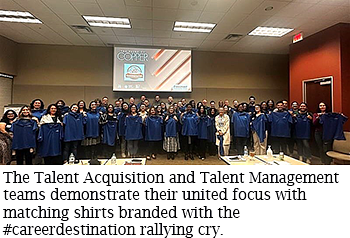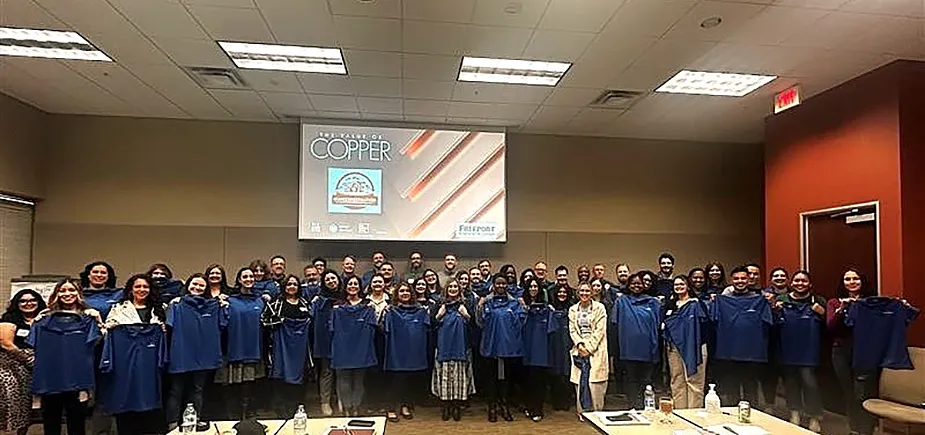Rounds of interviews have been completed, and the best candidate has decided to join the company.
That’s when the real work begins.
At Freeport – and in other workforce sectors – the hiring and development functions have operated somewhat independent of one another. However, there is recognition that a holistic approach to hiring, onboarding and supporting employees is critical for employee retention in a tight job market.
“For Talent Acquisition and Talent Management, our main focus is people and ensuring the people of the organization are able to run the business and do it well,” said Jim Merwin, Director-Talent Management. “We all care about our employees, and we care about making sure those employees are skilled to do their jobs.”
The work is in its earliest stages, so the initial focus has been on increasing collaboration and knowledge exchange between the two teams. The ultimate goal – branded as #careerdestination – is to hire the best people, then provide such a robust training experience and career path that those people never want to leave. Success will be measured by improved employee retention.
Avoiding siloes
“I think it’s helping us move away from a siloed mentality where we simply complete our part and pass the baton,” said Alisa Wren, Senior Manager-Talent Acquisition. “It’s helping us understand and appreciate the entire process beyond our individual roles, aligning us with the same goal and enhancing our shared success.”
 Under the traditional model, there were two parts to ensuring an organization had the workforce necessary to sustain the business: hiring the best candidate, then providing that candidate with the resources to be successful, said Erich Bower, General Manager-Strategic Workforce Development.
Under the traditional model, there were two parts to ensuring an organization had the workforce necessary to sustain the business: hiring the best candidate, then providing that candidate with the resources to be successful, said Erich Bower, General Manager-Strategic Workforce Development.
By emphasizing the continued collaboration and information sharing between the Talent Acquisition and Talent Management teams, that candidate’s chances of long-term success with the company only increase, he said.
With a voluntary turnover rate of 7 percent, Freeport compares favorably to the U.S. mining and logging industry (21 percent) and all U.S. industries (26 percent), Wren said. Still, one exceptional employee voluntarily choosing to leave for another opportunity can be one too many.
“When it comes to voluntary turnover, most people leave because they feel like they are not appreciated or they have limited opportunity,” Bower said. “We’re working hard to solve that issue. We want everybody to know they have a path.”
